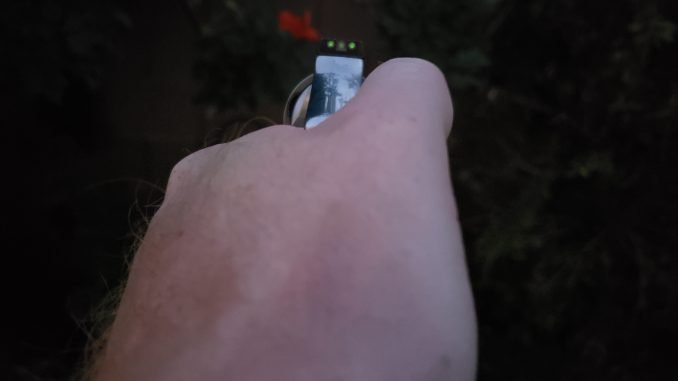
When I first got seriously into guns over a decade ago, nights sights were a must-have on defensive pistols. How else are you supposed to align your irons in low light situations? I slapped them on my Glocks, CZ’s my 1911, and more. Once I made the transition to pistol mounted optics (PMO’s), I continued this practice with my backup sights. Then I started seeing the smart guys in the red dot realm move to totally blacked-out irons, or a bright front and black rear sight. The idea being a more crisp sight picture, supported by white light if necessary, in the event your dot goes down. Makes sense to me, and saves me about half the cost of tritium inserts. If high speed guys from special forces and LE, with way more experience than me say so, there must be something to it.
After years of carrying in this configuration, I had no hesitations. This is the way, obviously, and all of my guns reflect that. That is until recently when things very suddenly changed for me. Let me tell you what happened and where my mindset is now.
Setting the Stage
As of 2023 I have been through about a dozen classes involving low-light training, both with handguns and long guns. Some highlights include Gunsite Academy’s 250 Pistol and 260 Shotgun, pistol and rifle classes with Greybeard Actual, and courses from Mike Pannone, Chuck Haggard, and Darryl Bolke. I’ve also participated in some low light pistol competition, and conduct my own practice a few times a year, both live fire and dry.
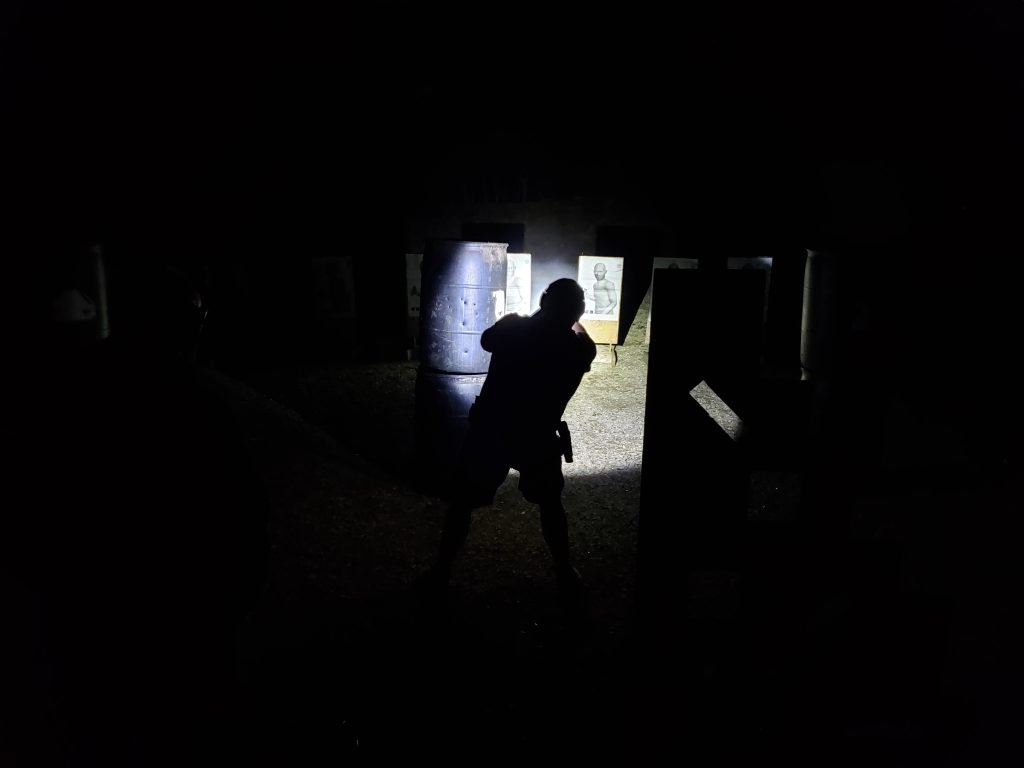
All of my low light training has been in range conditions. Typically it’s unrealistically dark for most situations, such as completely blacked out ranges, both indoors or rural. Nothing visible without the use of white light, including the target. This isn’t a slight on the instructors, but a limitation of the facilities. Often times it is mentioned that range conditions are not a 1:1 comparison to real life, but rarely do we get to actually check these changes for ourselves.
In those conditions, night sights don’t matter because you can’t see the target. Then you activate your white light and night sights still don’t matter because white light is on, overpowering the tritium, and providing contrast for your irons. Most instructors acknowledge these issues, but rarely do students get the opportunity to train in more realistic conditions.
Real World Experiences with Night Sights
It’s just after 7:00PM on a Monday in early September, I’m bringing my trashcans around to the back of my house from the street. The sun is below the mountains, but there’s a little bit of dark blue light in the sky. My neighborhood has limited street and house lighting, with light pollution regulations in effect keeping things from being too bright. It’s light enough where you could easily see someone, possibly a weapon in their hands, and the outline of your gun in front of you. Bright enough where I wouldn’t feel the need for a handheld light, especially in pajamas with limited space and no belt. Suddenly a thought pops into my mind: “What does my sight picture look like right now? It’s not dark, but it’s not light either. Can I actually see anything if I need to?”
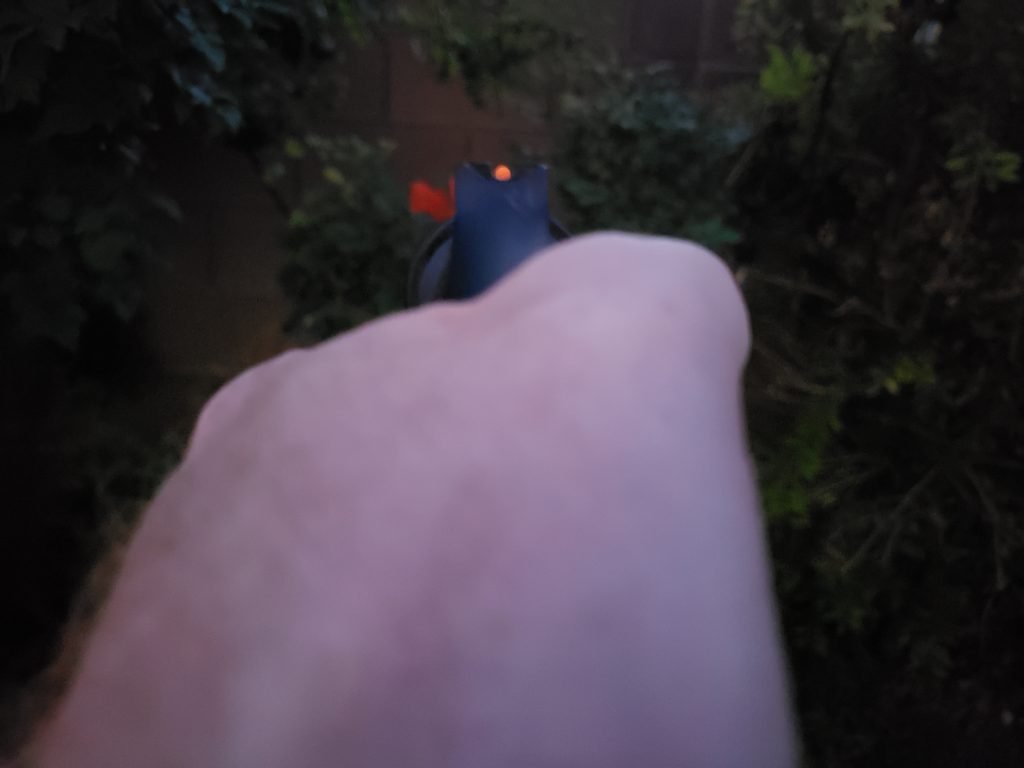
I’m currently pocketing a Smith & Wesson 351C, a regular evening companion. Its XS front sight is painted bright orange and is easily visible, even in the alley between houses without direct light. This is a pleasant surprise, I didn’t think I’d have such a bright front sight in these conditions. However I could not make out the rear notch in any meaningful way. Moving between different positions with varying levels of light, my sight picture is similar every time. Essentially a front sight somewhere out there, but little reference for an actual sight picture, even when really looking for it. Occasionally the front post is obscured by shadow (the frame of the gun), but I cannot reliably alight my sights. This is probably enough to get an okay hit at 3-7 yards, but nothing I’d feel good about. That’s a problem.
Compare and Contrast
Curious, I grab my S&W 640 Pro from the safe, which has 3-dot night sights, to compare. After trying the same positions as with the 351C, the difference is immediately apparent. Attaining a sight picture is quick and clean, presenting me zero issues. I’ve had night sights on guns in the past, and even shot low light courses using them, but the difference has never been so apparent before today.
Deceptive Disquietude
A claim with night sights is the potential for misaligning the tritium vials, essentially having your front sight outside the rear, confusing a rear lamp for the front, and sending rounds wild. Even with the short sight radius of the J-Frame, misalignments are immediately noticeable.
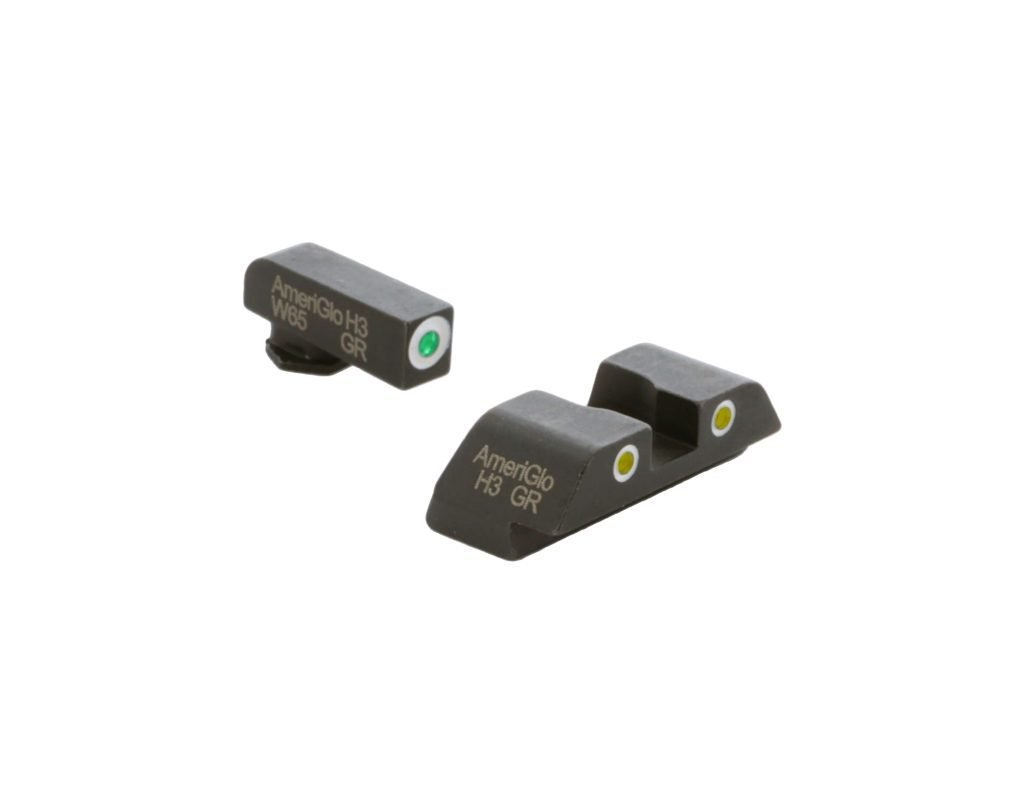
From inconsistent distance between the lamps, to a difference in focus, there are multiple cues to help you avoid this. When available, varying your front sight’s color from the rear is another mitigation technique. I will not say that an issue like this isn’t possible under duress, I think the concern is overblown. However, you should check your equipment to avoid having your first experience be at the worst possible time.
Thinking Deeper on Night Sights
I’ve been of the opinion that most any defensive situation would be feasible to see your sights with ambient lighting. If they can see you to assault you, you should be able to see enough to get a sight picture. As someone who often carries with an optic, this isn’t an issue at the forefront of my mind anyway. If not, you’d need white light, and would obviously have that because why wouldn’t you. The level of light from that night is something I experience fairly often, both indoors and out. Never have I felt the need to employ white light in those situations. I assumed I’d be able to see my sights with ambient lighting, but it appears that assumption was flawed. It is truly amazing what experimenting with your gear outside of the range will teach you.
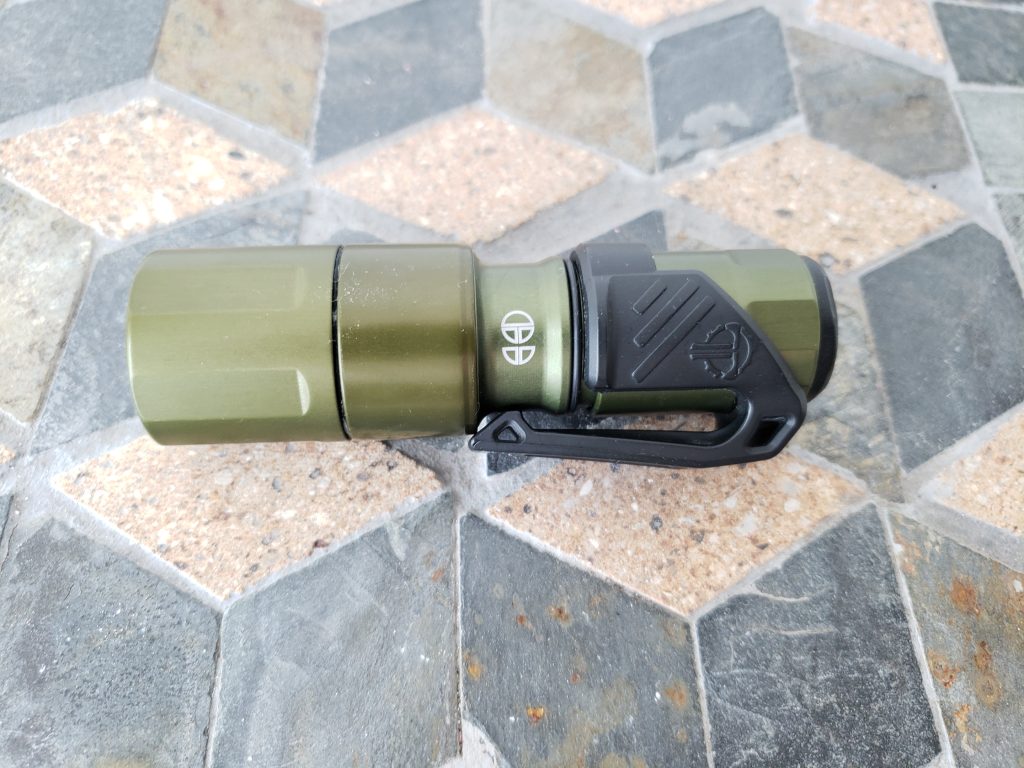
Curiously, many high level instructors, especially younger ones, scoff night sights. Typically the few people I see promote them are more seasoned like Tom Givens, Massad Ayoob, Bill Wilson, and similar. This is commonly regarded by younger shooters as holdovers from the pre-WML and pre-PMO days, and not terribly relevant today. Once again, the greybeards are showing they may know a thing or two that is lost on the newer generation.
Wrapping up In Defense of Night Sights
Blacked out or painted sights are great for the range. Night sights aren’t especially helpful for target practice or competition underneath the afternoon sun or artificial lighting. Nor is the tritium particularly helpful during the unrealistic conditions of most low light classes. But a quick dip into reality changed my tune in short order. I will likely slowly transition my pistols back to night sights over the coming months. I will definitely start working on more realistic practice, on and off the range. I’m glad this is a lesson learned the easy way rather than through hardship. Hopefully it will help you out as well.
What are your thoughts on night sights? Are they something you’ve been using, or did you shun them similarly to me?
Support My Work
After making it this far, thanks for reading! Writing isn’t my full-time profession, and nearly everything I do comes out of my own pocket. Between ammunition, tuition, range fees and more, expenses add up fast. If you like what I have to offer, consider making a donation to my Patreon.
Every bit helps bring more work like this to you, and contributes to shortened timelines or more in-depth work on my part. You’ll also have more direct access to me, offering suggestions for future projects, looking behind the scenes, and getting early access to some content. You can find my Patreon >>HERE<<





Be the first to comment